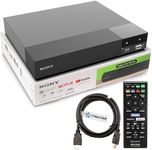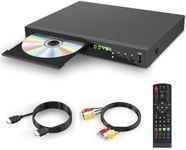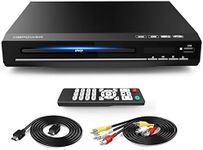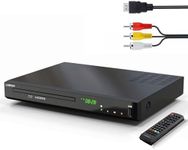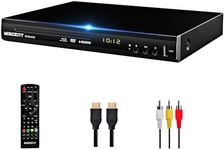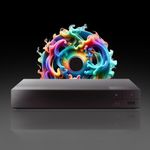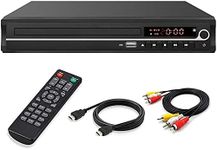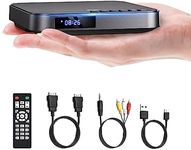Buying Guide for the Best Multi Region Dvd Players
Choosing the right multi-region DVD player can be a bit overwhelming, but with the right knowledge, you can find the perfect one for your needs. Multi-region DVD players are designed to play DVDs from different regions around the world, which is great if you have a collection of DVDs from various countries. Here are some key specifications to consider when making your decision.Region CompatibilityRegion compatibility refers to the ability of the DVD player to play discs from different regions. DVDs are coded by region to control the release of movies in different parts of the world. A multi-region DVD player can play discs from any region, which is important if you have DVDs from various countries. Look for a player that explicitly states it is multi-region or region-free to ensure it meets your needs.
Video Output FormatsVideo output formats determine how the DVD player connects to your TV and the quality of the video signal. Common formats include HDMI, component, and composite outputs. HDMI provides the best quality and is the most modern, while component and composite are older and offer lower quality. If you have a modern TV, look for a player with HDMI output for the best viewing experience. If you have an older TV, ensure the player has the appropriate outputs to match your TV's inputs.
Supported Disc FormatsSupported disc formats refer to the types of discs the DVD player can read. Besides standard DVDs, some players can also read CDs, VCDs, and various recordable formats like DVD-R, DVD+R, and DVD-RW. This is important if you have a diverse collection of discs or if you plan to play homemade recordings. Check the specifications to ensure the player supports the formats you need.
Playback FeaturesPlayback features include options like fast forward, rewind, slow motion, and zoom. These features enhance your viewing experience by giving you more control over how you watch your DVDs. Consider what playback features are important to you and look for a player that offers them. For example, if you like to analyze scenes in detail, a player with slow motion and zoom capabilities would be beneficial.
Audio Output OptionsAudio output options determine how the DVD player connects to your sound system. Common options include digital optical, coaxial, and analog outputs. If you have a home theater system, look for a player with digital outputs for the best sound quality. If you plan to use the TV's built-in speakers, analog outputs may be sufficient. Consider your audio setup and choose a player with compatible outputs.
USB and Streaming CapabilitiesUSB and streaming capabilities allow you to play media from USB drives or stream content from the internet. Some DVD players come with USB ports for playing videos, music, and photos from external drives. Others may have built-in Wi-Fi or Ethernet for streaming services like Netflix or YouTube. If you want more versatility in your media consumption, look for a player with these additional features.
Build Quality and DesignBuild quality and design refer to the physical construction and appearance of the DVD player. A well-built player will be more durable and reliable over time. Consider the materials used and the overall design, including the size and weight. If aesthetics are important to you, choose a player that matches your home entertainment setup. Additionally, a compact design may be preferable if you have limited space.

